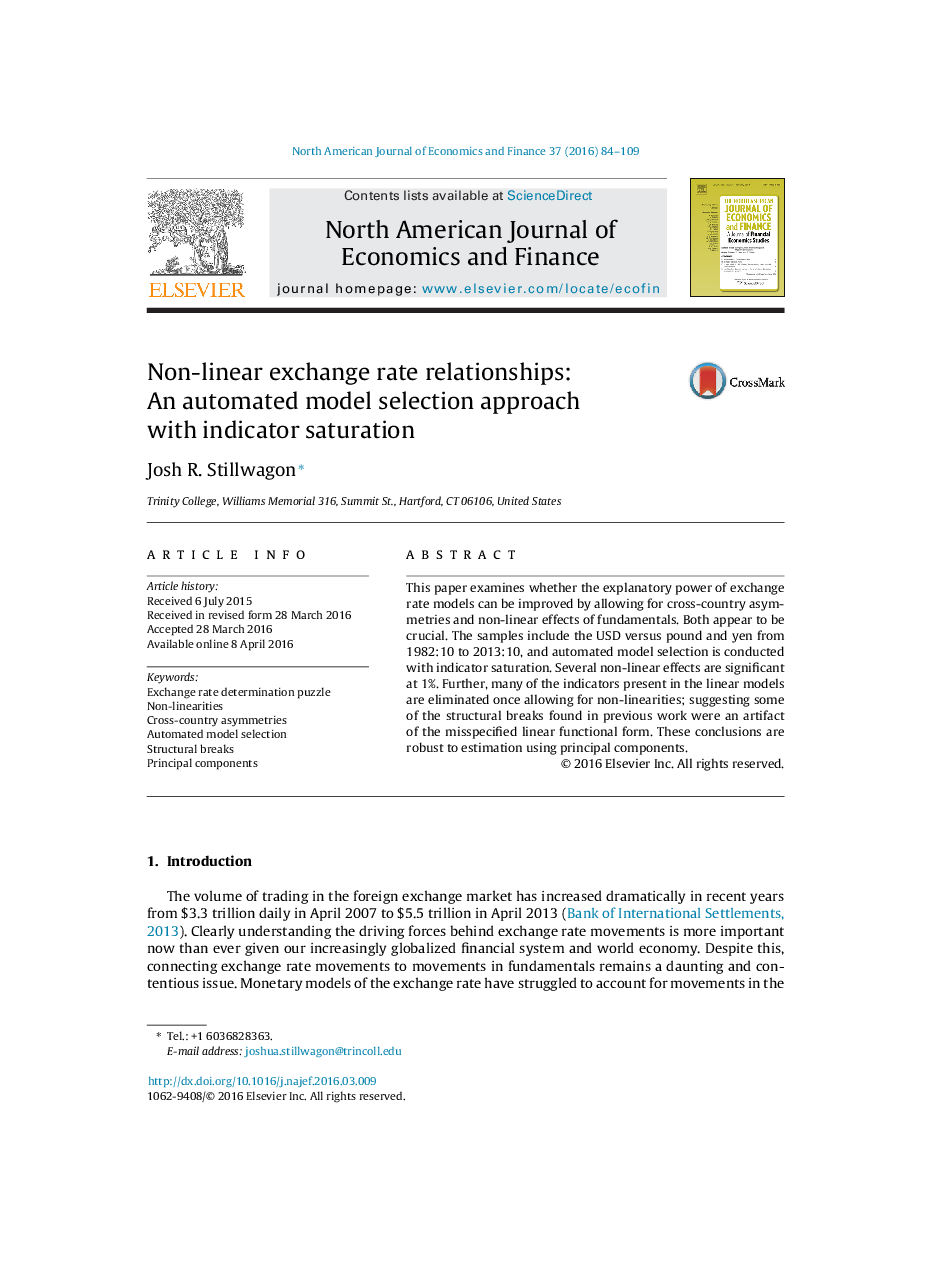| Article ID | Journal | Published Year | Pages | File Type |
|---|---|---|---|---|
| 974905 | The North American Journal of Economics and Finance | 2016 | 26 Pages |
•This paper uses non-linear automated model selection to analyze the USD/BP and USD/JY.•Several fundamentals are found to have non-linear effects significant at the 1% level.•Larger changes in fundamentals often cause changes in the exchange rate at an increasing rate.•Outliers and structural breaks are reduced when allowing for non-linearities.•These results are robust to estimation with principal components.
This paper examines whether the explanatory power of exchange rate models can be improved by allowing for cross-country asymmetries and non-linear effects of fundamentals. Both appear to be crucial. The samples include the USD versus pound and yen from 1982:10 to 2013:10, and automated model selection is conducted with indicator saturation. Several non-linear effects are significant at 1%. Further, many of the indicators present in the linear models are eliminated once allowing for non-linearities; suggesting some of the structural breaks found in previous work were an artifact of the misspecified linear functional form. These conclusions are robust to estimation using principal components.
